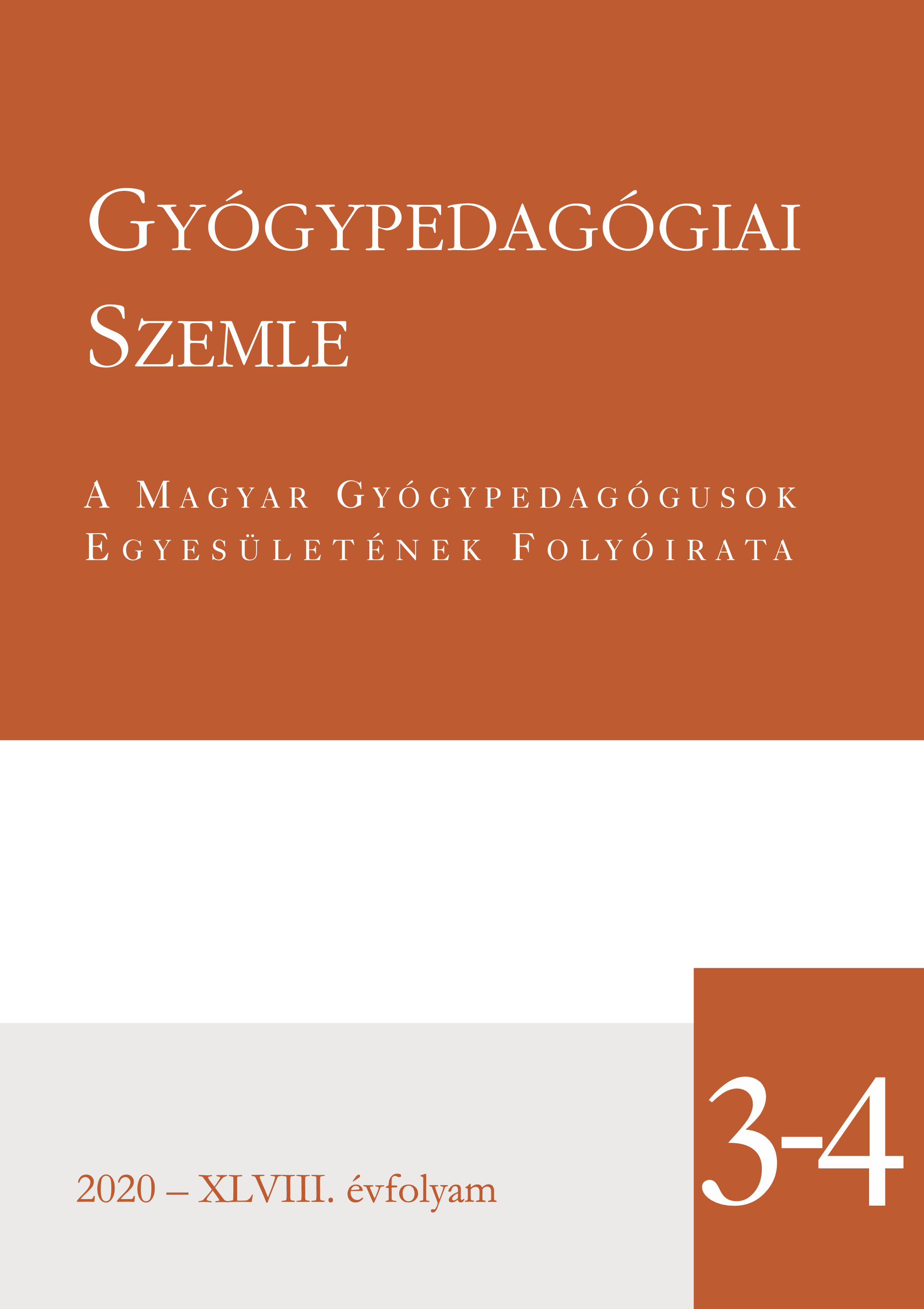Evidence related to primitive reflexes
Keywords:
persistent primitive reflexes, motor development, learning disorders, reading disordersAbstract
Background and aims: Primitive reflexes are inborn motor behaviours that serve the survival of the infant. In the early postnatal period these reflexes can be elicited by adequate stimuli in a stereotypic way. Later, they become gradually integrated as voluntary movements appear. In the neurological literature, persistence or reappearance of primitive reflexes is discussed as a symptom of develo pmental disorders or pathological processes affecting upper motor neurons, respectively. Persistent primitive reflexes are, however, getting an increased attention from teachers of special education and psychologists as well as of the general public, mostly because they are considered diagnostic markers of learning and behavioural disorders, even in the absence of neurological diseases, moreover, they are suggested targets of interventions. The aim of this study is to present the evidence regarding the occurrence of primitive reflexes unrelated to neurological diseases.
Methods: Using the PubMed database, I identified English-language, peer-reviewed publications related to the persistence of primitive reflexes in healthy (i.e. without any neurological diagnoses) people older than 1 year.
Results: With the above search criteria, 8 publications presenting the studies of 4 research groups were identified. In all studies, 1 to 3 primitive reflexes were assessed in preschool- or school-age children, with the persistence of primitive reflexes considered as risk factor. In all studies, the asymmetric tonic neck reflex (ATNR) was one of the assessed reflexes, and in 4 studies this was the only reflex assessed. The studies found correlations between the ATNR and learning disorders, reading disorders and ADHD symptoms, respectively. In all but one studies, the ATNR was assessed in quadruped or standing position, and not in supine position as infants are assessed, although the integration of ATNR in the 3rd-4th postnatal month is documented only in supine position. In earlier studies that used instrumental measurements, the presence of ATNR in the quadruped position was shown in healthy children as well as adults. Assessment ofa motor therapy aiming to integrate ATNR is reported in only one ofthe identified studies, which found a positive effect of the therapy on reading and writing performance.
Conclusions: The assumption of the identified studies that the persistence of primitive reflexes in healthy pre-schoolers and school- age children does not conform to age-related norms is not well established. Due to the small number of relevant studies, the small number of primitive reflexes assessed in these studies, and methodological issues of the assessment of primitive reflexes, th e available evidence seem to be insufficient to establish the relationship between the persistence of primitive reflexes and learning and behavioural disorders. Clarification of this relationship warrants standardisation of reflex assessment, establishment of age-related norms and comparison of reflex assessment with standardised motor development scales. Further studies are also needed for the evaluation of interventions aimed at the integration of primitive reflexes.
Keywords: persistent primitive reflexes, motor development, learning disorders, reading disorders

